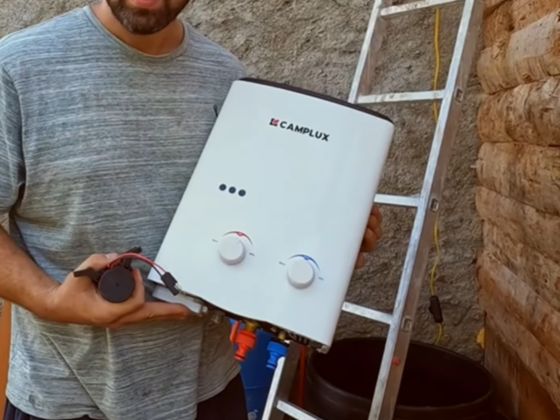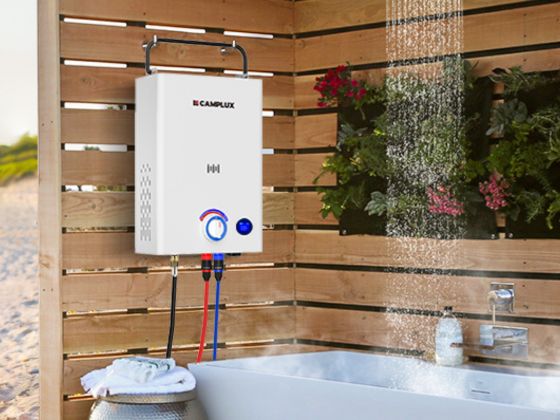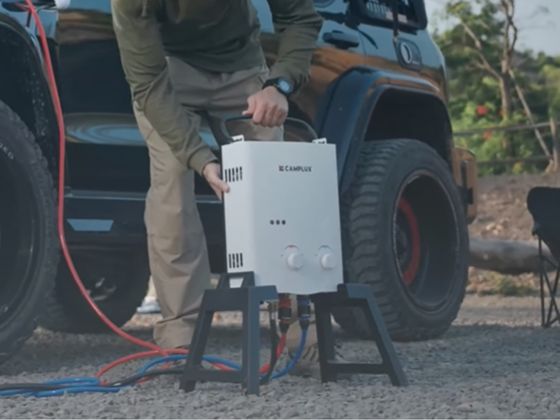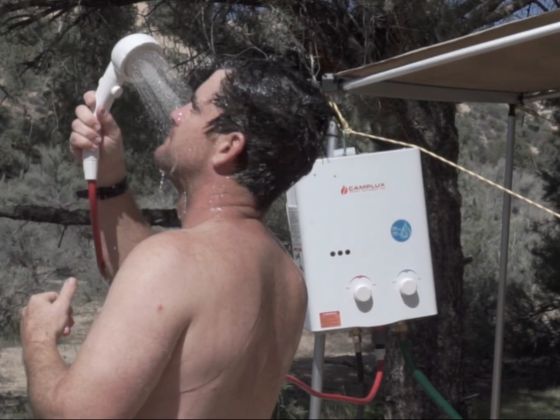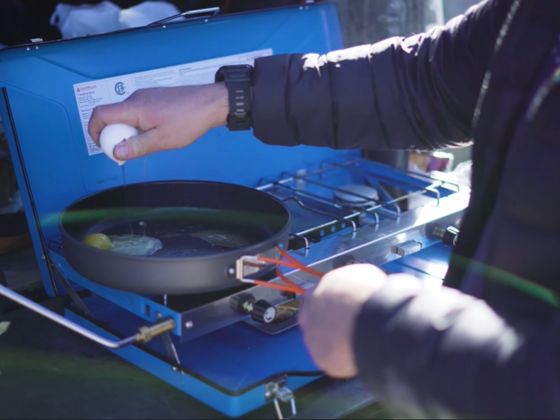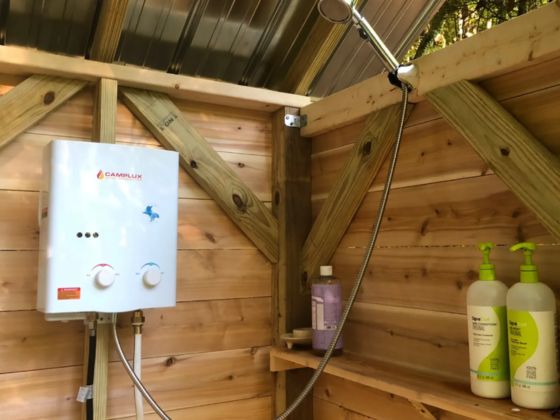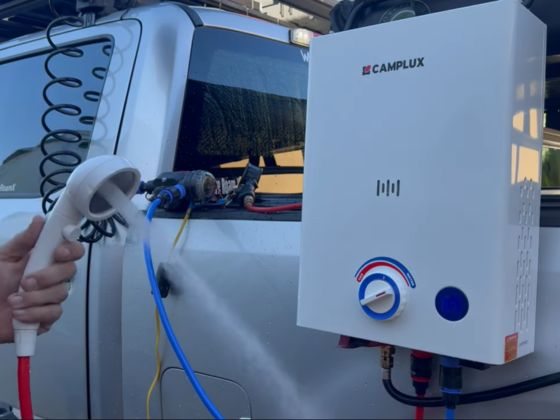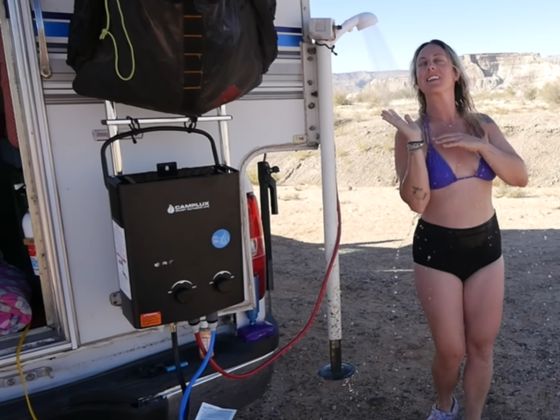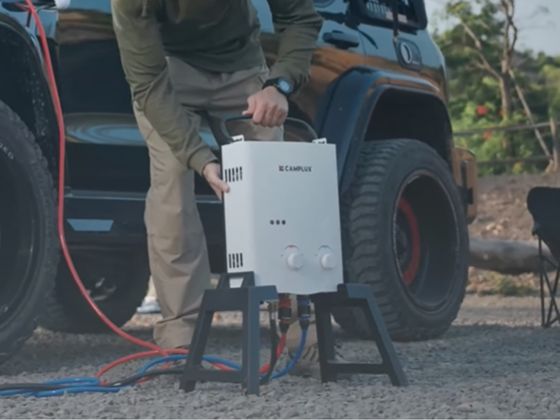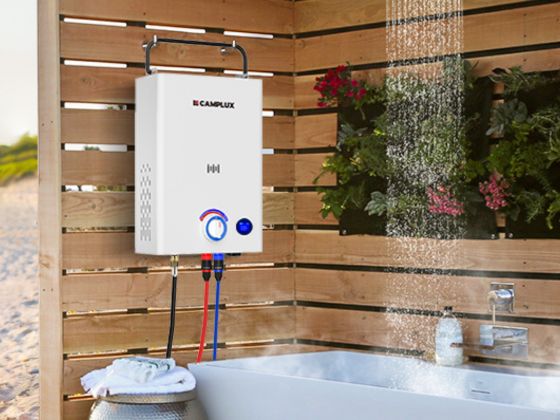If you've ever braved a chilly campsite rinse or tried to get the kids clean on a windswept beach, you'll know hot water isn't just a luxury—it's sanity. In Australia, where we roam far and wide and power can be patchy, a Portable Water Heater can turn a roughing-it weekend into a no-dramas getaway. This guide breaks down how to choose the right unit for campers, caravaners, off-grid families, and folks living on rural properties, with clear, "human" explanations for the tech bits. Along the way, we'll show you where Camplux models—AY132, F10, Nano 3 Pro, and BV158—fit best.
Why a Portable Gas Water Heater Makes Sense in Australia
Australia's distances are big, nights can be cold, and camp amenities aren't guaranteed. Solar often depends on perfect weather and decent panels; electric elements chew through batteries; boiling pots is slow and fiddly. Portable LPG water heaters give you hot water on-tap, almost anywhere you've got a gas bottle and a water source. That means proper showers after surfing, rinsing sandy gear, doing dishes without numb fingers, and keeping the caravan crew happy. With LPG widely available from servos and hardware stores, it's a practical choice across the country.
Who It's For: Campers, Caravaners, Off-Grid Families, Rural Properties
If you camp a few times each season, you'll appreciate a simple, grab-and-go setup that heats water quickly. If you're touring in a van, you might prefer a slightly larger unit that can live in the tunnel boot or hang on a rear rack. Off-grid homes benefit because LPG doesn't strain your solar battery bank—save those amps for fridges and lights. And on farms or remote blocks, a dependable outdoor unit near a sink, shed, or trough can make daily chores less of a slog. In short: if you value warm showers and clean gear away from town water and mains power, you're the audience.
Quick Pre-Purchase Checklist
Before you get dazzled by shiny specs, ask yourself five quick questions:
- How many people are you heating water for, and what for—showers, dishes, pets, all of the above?
- What's your water source: mains tap, rain tank, jerry can, creek?
- How cold is your inlet water and how warm do you want the outlet?
- Will you move the heater every trip or semi-fix it in one spot?
- What's your budget once you include hoses, regulator, pump, and a basic filter?
Tick those off and you'll cut the options down fast.
Key Specs Explained in Plain English
Flow rate (LPM, litres per minute). Think of LPM like "tap size." Higher LPM means more water coming through, so it feels more like a proper shower. For a single person, 5–6 LPM can do in warmer months; families or colder climates feel better at 8–10 LPM.
Temperature rise (ΔT). This is how much the heater can lift the water temperature. If your creek water is 12 °C and you want 40 °C, you need a 28 °C rise. Colder inlet or hotter target means you'll want a beefier burner or reduced flow.
Ignition and power. Many units use batteries for spark ignition—handy because you don't need 240 V. Others can run off 12 V for controls. Either way, the real heat comes from gas, not electricity.
Water pressure and pumps. If you're on mains or a good tank pump, you're laughing. If you're using gravity from a jerry can, add a small 12 V pump to push water through the heater. A simple inline filter protects against grit.
Safety features. Look for flame-out protection (if wind blows it out, the gas shuts off), overheat cut-off, anti-tilt, and temperature limiters. These are the grown-up bits that keep trips drama-free.
Size and portability. Smaller is easier to carry and hang; larger usually delivers a stronger shower. Decide where it will live—on a hook at camp, in the caravan locker, or semi-fixed on a wall near an outdoor sink.
Australia's Climate & Water Conditions
An alpine campsite in winter is a different beast to a summer beach park-up in Queensland. Southern winters or mountain trips mean colder inlet water and bigger temperature rise, so consider higher LPM models that have the grunt to keep showers comfy. Coastal trips bring salt air and fine sand—give your heater a freshwater rinse after use and keep it covered when stored. If you're using bore or creek water, a filter is a cheap insurance policy. And remember, open-air use is a must: these are outdoor appliances.
Camplux Model Match-Ups: Find Your Fit
Camplux offers a spread of models so you can match your style of travel and water needs.
AY132 — the classic 5 L portable
Best for: solo campers, couples, short trips, surfers rinsing off after a session. It's compact, quick to hang, and friendly with modest water sources. In warmer weather or for short showers, it's brilliant. If you're feeding from a jerry can, pair it with a 12 V pump and a small filter. AY132 is the ‘chuck it in the boot' unit you won't overthink.
F10 — the stronger 10 L performer
Best for: families and small groups who want a "real at-home" shower feel, even when it's a crisp morning in Tassie. The extra flow gives you more headroom for temperature rise, so you won't be standing there shivering while it catches up. It's bigger than AY132, sure, but still portable enough for weekenders, and it copes well with consecutive showers.
Nano 3 Pro — ultra-compact and nimble
Best for: light packers, day-trip rinses, quick jobs (dogs, boards, sandy feet), and micro-camp setups. If you're after a minimal footprint and fast heat for short tasks, Nano 3 Pro keeps it tidy. For long, back-to-back showers in cold conditions, step up to F10 or BV158.
BV158 — 8 L/min semi-fixed hero
Best for: caravans with an external shower point, rural properties, farm sheds, or a cabin setup where the unit can live outdoors with good ventilation. The BV158 is great when you want consistent performance in a more permanent spot. It's still outdoor-rated, but it slots neatly into a "set and forget" routine, especially for families and frequent users.
Use-Case × Model Quick Picks
- 1 person, light weekend camping (spring/summer): AY132 or Nano 3 Pro
- 2–4 people, regular camping or caravanning: F10
- Cold inlet water or back-to-back showers: F10 or BV158
- Gravity feed/jerry can water: AY132 or F10 with a 12 V pump + filter
- Semi-fixed at a rural sink or caravan exterior: BV158
- Pets/gear rinse station: Nano 3 Pro or AY132
Accessories and Bundles That Make Life Easier
At minimum, you'll want a compliant LPG regulator and hose, a shower head with hose, and a simple inline filter. If your water source isn't pressurised, add a compact 12 V pump (cig socket or battery clamps). Quick-connect fittings make setup too easy—no mucking about on a cold morning. For travel days, a tidy carry crate or padded bag and a weather cover keep everything clean and ready for the next stop.
Safety & Compliance (Read This Bit, Mate)
These heaters are for outdoor use only. Never run them in a closed bathroom, annex, or inside a van—carbon monoxide is a silent killer. Keep clearances around the unit, keep the cylinder upright on a stable surface, and route hoses away from hot bits and trip hazards. In Australia, any fixed gas work must be done by a licensed gas fitter. If you're semi-fixing a unit like the BV158 to a building or integrating to a van's gas system, call a pro. It's not just about rules—it's peace of mind.
Care & Maintenance
After beach trips, flush the unit and shower hose with fresh water to clear salt. Let the heater drain before storage, especially before frosty nights—standing water can freeze and damage internals. Clean the inlet filter occasionally, check o-rings on quick-connects, and give hoses a once-over before each trip. Once a season, a gentle descale helps if your water is mineral-rich. Store it dry and covered, and it'll be ready for the next arvo shower.
Budget & Total Cost of Ownership
Smaller portable units like AY132 or Nano 3 Pro are the value champs for casual campers. The F10 costs more up front but rewards you with stronger flow and winter comfort. The BV158 sits in the semi-fixed camp—great for frequent use around a property or van. LPG consumption depends on flow and how hot you run it, but because gas is doing the heating (not batteries), you keep your electrical system free for other essentials. Factor in a pump (if needed), filter, and some connectors—once set up, running costs are predictable and spare parts are easy to source.
A Simple 5-Step Decision Flow
- People & purpose. Count heads and uses (showers, dishes, pets).
- Water source. Pressurised or gravity? If gravity, plan a 12 V pump.
- Climate & comfort. Colder trips or longer showers? Go higher LPM.
- Mobility. True portable (AY132, Nano 3 Pro, F10) or semi-fixed (BV158)?
- Budget bundle. Add regulator, hoses, filter, and storage bits.
Three fast recommendations:
- Solo weekender (warmer months): Nano 3 Pro + inline filter.
- Family of three, mixed seasons: F10 + 12 V pump + filter.
- Rural sink / caravan exterior: BV158 (installed outdoors by a licensed gas fitter) + shower kit.
FAQs
Can I use a portable gas water heater inside a caravan bathroom?
No. These are outdoor appliances. Use them in open air with proper ventilation and keep clearances as per the manual.
What LPM is enough for a decent winter shower?
If your inlet water is cold, 8–10 LPM feels much more forgiving, especially for consecutive showers.
Do I need a 12 V pump for gravity feeds or jerry cans?
Yes, a small pump makes a world of difference—consistent pressure equals consistent heat.
How do I winterise the unit?
Drain it fully after use, crack fittings to let trapped water out, and store dry. In alpine conditions, do this before the freeze sets in.
AY132 vs Nano 3 Pro—how do I choose?
Go Nano 3 Pro for ultra-compact, quick rinses and light tasks. Pick AY132 if you want a bit more oomph for short showers and dishes.
When should I choose BV158 instead of a portable unit?
If you've got a regular spot—a farm sink, cabin, or caravan exterior—and want consistent performance without setting up each time, BV158 is a great fit (outdoor installation only, by a licensed gas fitter).
What hoses and regulators work in Australia?
Use an Australian-compliant LPG regulator and hoses with the correct fittings. If you're unsure, ask a licensed gas fitter to set it up safely.
Bringing It All Together (No Dramas)
Match people and purpose to flow rate, consider your climate and water source, and decide whether you're truly portable or semi-fixed. For quick-carry convenience, AY132 and Nano 3 Pro shine; for stronger showers across seasons, F10 is a ripper; for set-and-go reliability at a property or caravan exterior, BV158 is the tidy solution. Pack the right pump, filter, and connectors, and your next rinse will be as cruisy as a post-swim cuppa.


